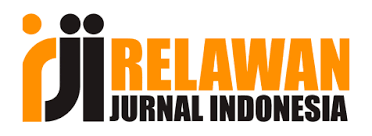The Governance Challenges and Strategic Pathways for Sustainable Development of County-Level Football Associations in China
DOI:
https://doi.org/10.58557/(ijeh).v4i3.249Keywords:
County-Level Football Association, Dilemma, PathAbstract
The sustainable development of county-level football associations is a requirement set forth by various policy documents from the Party and the State, reflecting the essential principles of Chinese civil sports organizations. Unlike the Chinese Football Association (CFA) and provincial football associations, county-level football associations are characterized by their non-governmental, civic, and amateur nature. This study examines the development of these associations and identifies several significant issues impeding their progress: outdated development concepts, unclear division of power and responsibilities, unequal resource distribution, ineffective roles of leadership bodies, and a lack of clear definitions for the roles of governing bodies. Currently, these associations face the challenge of lagging in development due to these unresolved issues. To address these challenges, it is essential for county-level football associations to revamp their development concepts to align with contemporary needs and expectations. Strengthening the leadership roles within these associations is crucial, as it will provide clear guidance and direction for their activities. Additionally, there is a need to improve the system design to make the management of these associations more efficient and effective. Encouraging the participation of all relevant stakeholders is also vital to form a cohesive and synergistic approach to development. By fostering collaboration among various parties, county-level football associations can leverage diverse resources and expertise, leading to more robust and sustainable growth. The ultimate goal of these recommendations is to promote the endogenous development of county-level football associations. By doing so, these associations can play a pivotal role in enhancing grassroots participation in football, thereby contributing to the broader objective of nurturing a strong mass base for football in China. Through improved governance, resource allocation, and stakeholder engagement, county-level football associations can achieve sustainable development and ensure widespread participation in the sport across the nation
References
Bai, Y., & Wang, J. (2020). Research on soft law governance mode, dilemma and countermeasures of local football associations: An empirical analysis based on the survey of Suzhou, Zhejiang, and Shanghai provinces and cities. Journal of Wuhan Institute of Physical Education, 54(11), 41-48.
Braun, V., & Clarke, V. (2006). Using thematic analysis in psychology. Qualitative Research in Psychology, 3(2), 77-101.
Chinese Football Association. (2020). How county football associations with thousands of members are made. Retrieved from https://www.thecfa.cn/
Chongqing Sports Bureau. (2023). Chongqing 2022 sports ground statistics survey data announcement (Yu Sports Announcement [2023] No. 1). Retrieved from https://tyj.cq.gov.cn/
Creswell, J. W. (2014). Research design: Qualitative, quantitative, and mixed methods approaches (4th ed.). Sage Publications.
Denzin, N. K. (2017). The research act: A theoretical introduction to sociological methods (5th ed.). Routledge.
English Football Association. (2020). The FA's code of governance for county football associations. Retrieved from https://www.thefa.com/news/2020/
Flick, U. (2018). An introduction to qualitative research (6th ed.). Sage Publications.
Guo, J. (2021). Research on the governance capacity of local football associations in China (Unpublished doctoral dissertation). Chengdu Institute of Physical Education.
Hao, W., Fang, Q., Li, S., et al. (2020). Blockchain governance: Research on the innovative path of intelligent governance of social football in China. Journal of Shenyang Sports Institute, 39(6), 65-71+80.
Huang, L. (2021). Research on the adjustment and reform of Chinese football association under the view of autonomy. Journal of Hebei Institute of Physical Education, 35(4), 15-23.
Humphrey, A. (2005). SWOT Analysis for Management Consulting. SRI Alumni Association.
Japan Football Association. (2022). Deloitte, Nippon Soccer Association and Paternoster contract conclusion. Retrieved from https://www.jfa.jp/news/00023650/
Jick, T. D. (1979). Mixing qualitative and quantitative methods: Triangulation in action. Administrative Science Quarterly, 24(4), 602-611.
Kvale, S., & Brinkmann, S. (2009). InterViews: Learning the craft of qualitative research interviewing (2nd ed.). Sage Publications.
Liang, W. (2023). Key issues and optimisation path of local governments in allocating ‘urban resources’ of Chinese professional football clubs. Journal of Shanghai Institute of Physical Education, 47(7), 11-19.
Liu, J., & Wang, H. (2022). Challenges and strategies in football governance at the county level in China. Journal of Sports Management, 14(2), 123-139.
Liu, S., & Xu, L. (2019). Co-beneficial organisation: Functional positioning of China's local football associations after decoupling. Sports and Science, 40(5), 52-61+75.
Liu, S., Xu, L., & Tang, W. (2021). Institutional dilemmas and solutions for the reform of local football associations. Sports and Science, 42(1), 45-55.
Liu, W. (2022). Research on internal governance strategy of local single sport associations (Unpublished doctoral dissertation). Suzhou University.
Maxwell, J. A. (2012). Qualitative research design: An interactive approach (3rd ed.). Sage Publications.
Ministry of Finance. (2020). Notice on the issuance of the interpretation of certain issues of the accounting system for private non-profit organisations. Retrieved from https://www.gov.cn/
Patton, M. Q. (2015). Qualitative research & evaluation methods: Integrating theory and practice (4th ed.). Sage Publications.
Yang, F., & Li, X. (2023). Infrastructure and training deficits in Chinese county-level football: An analysis. Asian Sport Research Journal, 19(3), 45-60.
Yin, R. K. (2018). Case study research and applications: Design and methods (6th ed.). Sage Publications.
Zhang, L., Xu, Y., & Chen, M. (2021). The impact of governance reforms on sports associations in China. International Journal of Sport Policy and Politics, 13(4), 567-584.
Zhao, D. (2021). Development dilemma and reform direction of local football associations under the background of management-operation separation. Journal of Nanjing Institute of Physical Education, 20(12), 21-27.
Zhu, H., Ding, Y., & Hong, J. (2022). Research on the dynamics and path of endogenous growth of county-level football associations in China. Sports Science, 42(12), 86-93.
Zhu, K., Zhao, M., & Li, C. X. (2023). Exploration on the development of local youth school football in the new era. Wushu Research, 8(9), 132-133.
Downloads
Published
How to Cite
Issue
Section
License
Copyright (c) 2024 Wang Yulei

This work is licensed under a Creative Commons Attribution-ShareAlike 4.0 International License.














